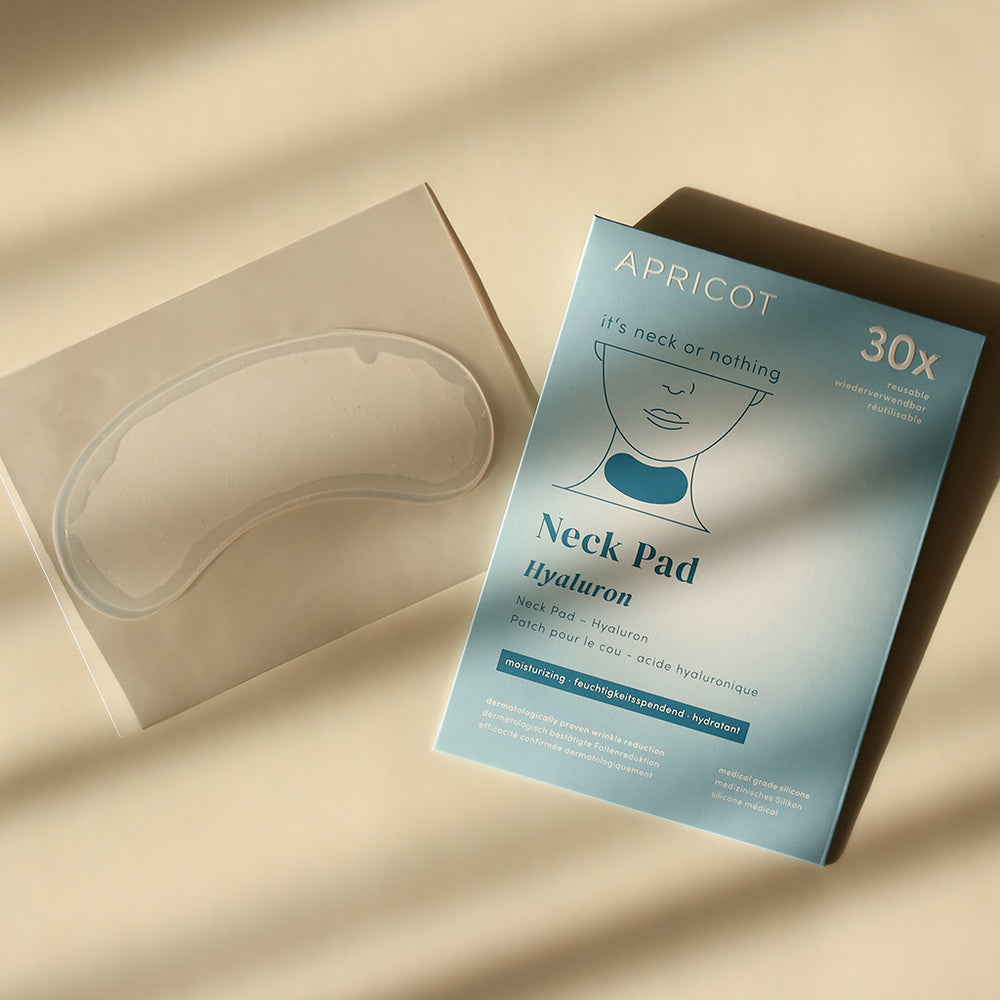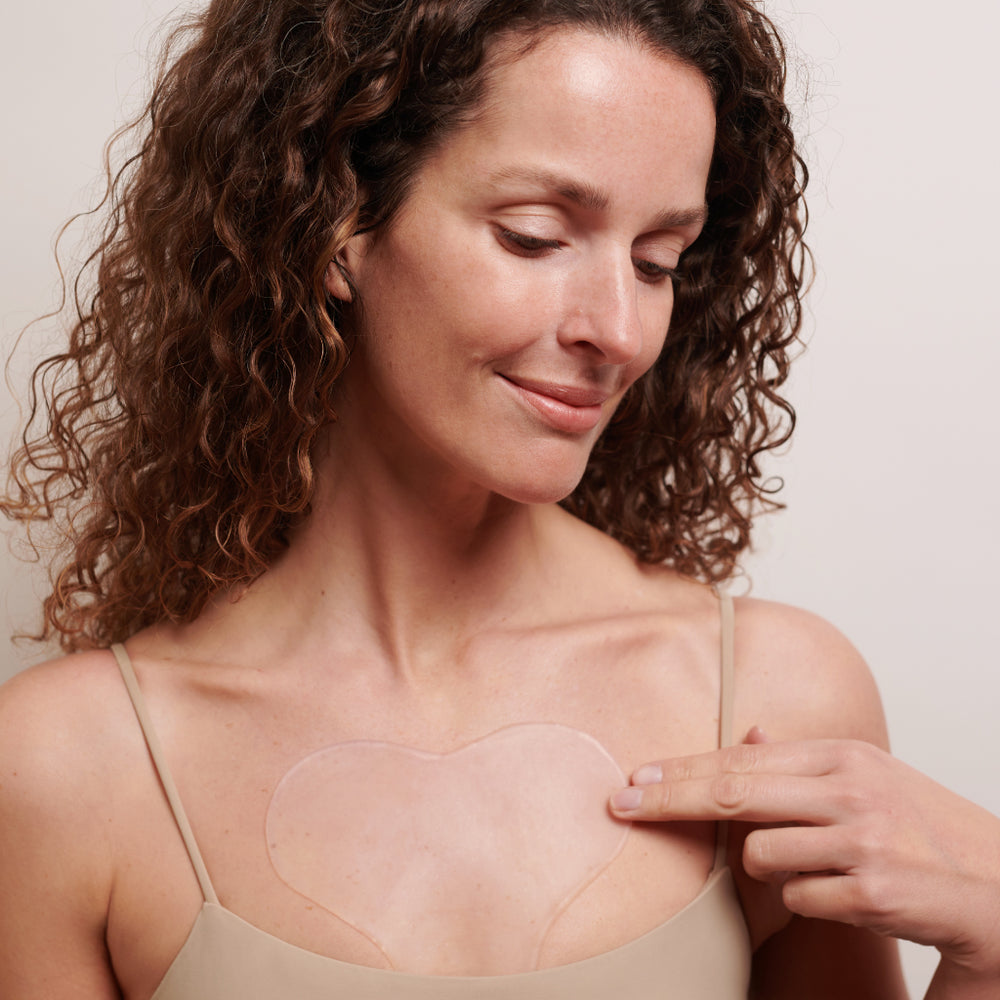Tech Neck: If your cell phone makes attitude - and wrinkles
Smartphones, tablets, and laptops have become an essential part of our everyday lives. But their intensive use has brought an unwanted side effect: the so-called "Tech Neck", also known as "Text Neck." Especially digital natives quickly feel what constantly looking down at the phone does to the neck, posture — and even the skin on the neck. Here you’ll find out what’s behind the Tech Neck phenomenon, how to recognize its typical signs — and how to counteract it with smart everyday tricks.
What exactly is Tech Neck?
Experts use the term Tech Neck to describe posture and skin problems in the neck area caused by frequently bending the head forward while using phones or tablets. Medically, this posture is known as forward head syndrome and puts unnecessary strain on your cervical spine.

How common is Tech Neck?
Studies show that Tech Neck is increasing worldwide. The human head weighs about five kilograms on average — but the further it tilts forward, the greater the pressure on the cervical spine becomes. At a tilt angle of 45 degrees, the weight acting on the neck and back increases fivefold. Over time, this poor posture leads to tension, pain, and structural changes in posture.
Recognizing Tech Neck symptoms
Typical signs of Tech Neck include:
- Tight and sore neck
- Frequent headaches or migraines
- Stiff shoulders and limited mobility
- Tingling or numbness in hands and arms
- Premature wrinkle formation on the neck (known as Tech Neck lines)

Causes of Tech Neck
Poor posture when using digital devices
When you look at your smartphone or laptop for extended periods, your head naturally tilts forward. This posture not only strains your cervical vertebrae and neck muscles but also increases the pressure on your spine over time. Prolonged scrolling, typing, or reading can cause tension and poor posture — even at a young age.
Effects on skin and neck
What many people don’t realize: your skin also suffers from Tech Neck. The constant bend in the neck causes fine lines and wrinkles to form more quickly — especially where the skin is thinner and more delicate than on the face. The result: visible horizontal lines on the neck that can deepen over time. Additionally, the bent posture often leads to poorer blood circulation, making the skin look dull and tired.
How to prevent Tech Neck
1. Ergonomic workstation setup
- Keep your screen about an arm’s length (50–75 cm) away.
- Make sure your screen is positioned at eye level, for example, using a laptop stand.
- Maintain a straight posture: your head, shoulders, and hips should form one line.
- Keep your elbows at a 90-degree angle and your feet flat on the floor.
2. Healthy smartphone and tablet habits
- Rest your arms on a cushion to relieve tension in the neck.
- Hold your device as close to eye level as possible.
3. Small breaks and helpful exercises
Take a short break every 30–45 minutes to consciously correct your posture:
“Double chin” exercise: Stand with your lower back against a wall, feet about two foot-lengths away. Gently press the back of your head against the wall and pull your chin inward until you feel a slight stretch in your neck – forming a “double chin.” Hold for 10 seconds and repeat 10 times. This helps you become more aware of your posture and relieves targeted tension.
Chest muscle stretch: Stand in a doorway, place your arms at shoulder height against the frame, and slowly lean forward until you feel a pleasant stretch in your chest and shoulders. Keep your shoulders relaxed. Hold for about 30 seconds and breathe calmly. This exercise helps relieve tension and opens the chest – counteracting the rounded shoulders often caused by Tech Neck.
Gentle neck and shoulder massage: Gently massage tense areas in circular motions for 3–5 minutes. Focus on breathing deeply and relaxing the muscles. Use your fingertips to knead along the neck muscles down to the shoulders – this releases tension, boosts circulation, and relaxes both body and mind.
4. Nourishing skincare and sun protection
Use sunscreen and moisturizing creams daily to care for the delicate neck skin and prevent premature wrinkles.
Conclusion
Tech Neck isn’t destiny – it’s a condition you can actively prevent. By paying attention to your posture, taking regular breaks, and tailoring your skincare to the delicate neck area, you’ll not only benefit your back but also preserve your skin’s youthful firmness.
Important: Don’t ignore ongoing discomfort. Not every neck pain has the same cause. A medical evaluation helps you take the right steps – for better mobility, less discomfort, and overall well-being.
And from a beauty perspective? Mindful posture combined with the right skincare doesn’t just make you look fresher – it also gives you more confidence and a radiant presence.


